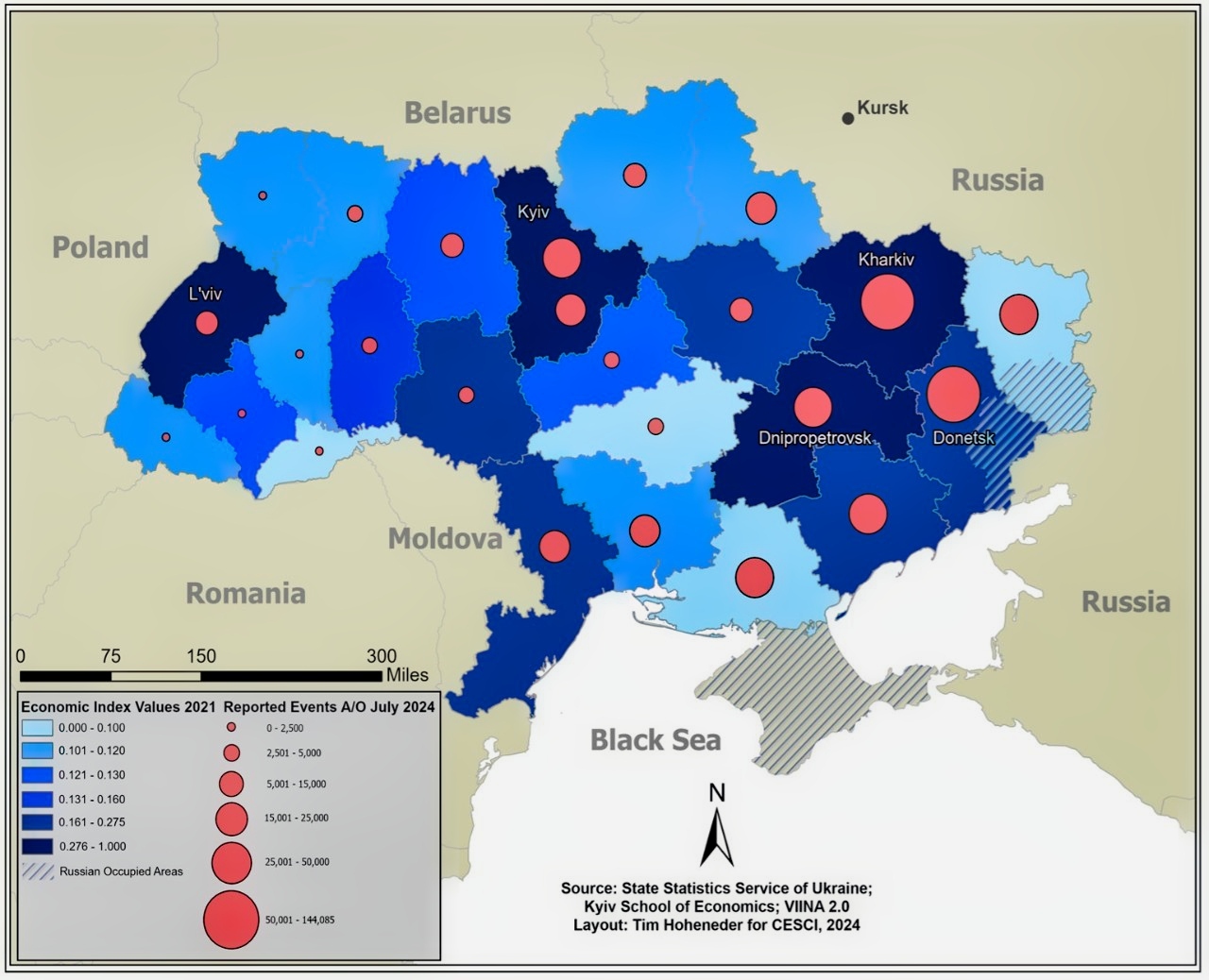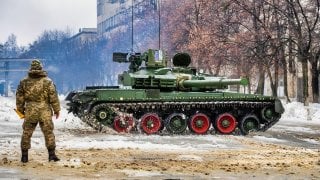Is Ukraine’s Kursk Offensive Tied to Its Economic Security?
A central concern for reconstruction planners is the extent to which the country’s economic landscape has been altered by the fighting. Protecting and preserving productive capacity may not be the primary objective of the Kursk operation, but it may be among the benefits of taking the war to Russian soil.

As others have discussed in this publication, there are a variety of reasons why the Ukrainian leadership undertook the ongoing invasion of Russia and what the military implications of doing so might be. We acknowledge the potential value of the incursion to changing force deployment decisions by Russia, altering conditions at the negotiating table, and forcing Russian citizens to confront the realities of the war their leaders instigated. However, little attention has been paid to what role Ukraine’s economic situation and reconstruction efforts might be playing in Kyiv’s strategic decisionmaking. By changing the map, the Kursk incursion potentially alleviates pressure on hard-hit, vital regions.
Full-scale warfare makes an imprint of destruction that aligns with the battlefront. Unrelenting heavy fighting in Ukraine’s east has devastated large areas, killed or wounded thousands of civilians, displaced millions, and wrecked social infrastructure such as schools, hospitals, and housing facilities. This devastation has implicated Russia in well-documented war crimes.
As if this horrific damage to civilian facilities is not enough, these attacks also destroyed economic infrastructure, as epitomized by the months-long siege of Mariupol. Two of the most iconic events of the war’s early days happened there: the destruction of the Drama Theater, killing 600 innocent civilians, including many children, and the leveling of the Azovstal Iron and Steel Works, previously one of the largest factories of its type in Europe.
Unfortunately for Ukraine, as our research shows, the worst-damaged regions in this war were also among the most economically productive parts of the country (as seen in the above figure).
Examples from Personal Research
Data from the Violent Incident Information from News Articles (VIINA) project allows us to geolocate over 550,000 kinetic military incidents from all types of weapons, such as artillery, rockets, infantry weapons, and air strikes, inside Ukrainian territory. Although most of these violent incidents involved localized, small-scale fighting, many targeted factories, the railroad network, grain export facilities, mines, energy facilities, and goods distribution centers which are vital to the functioning of the national economy.
We then combined the violent incident data with an index of economic productivity among Ukraine’s twenty-five regions that we compiled from official Ukrainian government statistics for 2021, the last full peacetime year, to provide this visual representation of destruction.
As our map shows, four of the five most economically productive areas: the cities of Kyiv, Dnipropetrovsk, Kharkiv, and Kyiv, are among the hardest hit and accounted for about 45 percent of gross national product in 2021. This is not coincidental, as attacks on these areas are made easier by their location in the east or, in the case of Kyiv, their proximity to Belarus. The situation in Kharkiv is especially worrisome for the Ukrainian side, as fighting has been ongoing there since the war started, causing massive damage to Ukraine’s second-largest city and a key center of industry, technology, and commerce.
Amidst this ongoing assault from the east, Ukrainians have adapted by relocating more production and businesses to western parts of the country where large-scale attacks are fewer and where most foreign direct investment is being situated. This spatial realignment of the economy westward has significant implications for Ukraine’s future ties with Europe. But as reconstruction progresses, there is a compelling need to ensure that the wreckage in the east is remediated to the greatest extent possible to avoid rising inequalities in the delivery of goods and services to the people living there.
This is essential on humanitarian grounds alone, but also because securitizing well-being results in a more productive and resilient population that is essential to the war effort and rebuilding the country.
Although Ukraine, against all odds, managed to rebound appreciably from the 20 percent drop in its gross national product in the year after Russia’s massive invasion in February 2022, the challenges going forward for a full recovery and future growth are daunting.
A central concern for reconstruction planners is the extent to which the country’s economic landscape has been altered by the fighting. Protecting and preserving productive capacity may not be the primary objective of the Kursk operation, but it may be among the benefits of taking the war to Russian soil.
About the Authors:
Erik Herron is the Eberly Family Distinguished Professor of Political Science at West Virginia University. His research focuses on political institutions, especially in Ukraine.
Ralph Clem is an Emeritus Professor of Political Geography at the Steven J. Green School of International and Public Affairs at Florida International University. He works on the geopolitics of post-Soviet states, in particular Ukraine and Russia.
The main Image at the top is from Shutterstock. The image in the text is from the Author.


